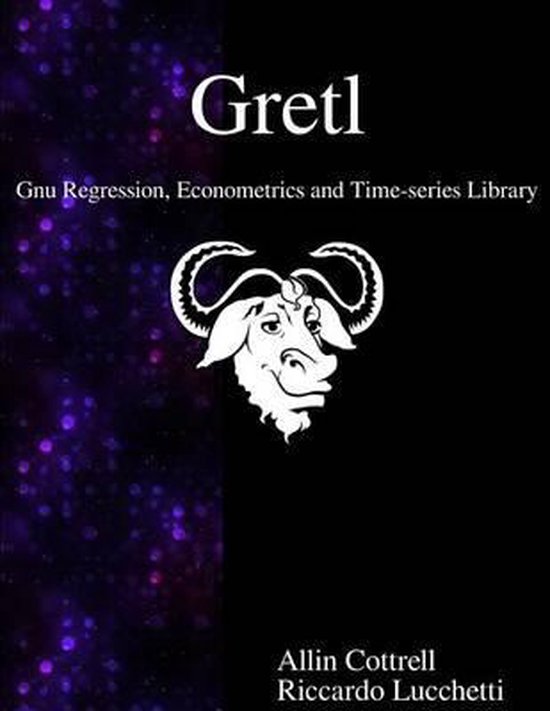Anthea Kimberly 'Kym' Karath (born August 4, 1958) is an American actress, best known for her role as Gretl, the youngest of the Von Trapp children in The Sound of Music. Manual Here we have the two PDF files that compose the gretl manual (the User's Guide and Command Reference) in both US letter and A4 format, along with supplementary documentation for relatively new or specialized functionality. Source: README.txt, updated 2018-07-15. Braun, Margarete Berta “Gretl”, born in Munich, was the youngest of three daughters of school teacher Friedrich “Fritz” Braun and seamstress Franziska “Fanny” Kronberger.
| Developer(s) | the gretl team |
|---|---|
| Initial release | 31 January 2000; 21 years ago |
| Stable release | 2021a / 18 January 2021; 2 months ago |
| Preview release | |
| Repository | |
| Written in | C |
| Operating system | Cross-platform |
| Available in | Multilingual (11) |
| Type | Statistical software |
| License | GNU GPLv3 |
| Website | gretl.sourceforge.net |
gretl is an open-sourcestatistical package, mainly for econometrics. The name is an acronym for GnuRegression, Econometrics and Time-seriesLibrary.
It has both a graphical user interface (GUI) and a command-line interface. It is written in C, uses GTK+ as widget toolkit for creating its GUI, and calls gnuplot for generating graphs. The native scripting language of gretl is known as hansl (see below); it can also be used together with TRAMO/SEATS, R, Stata, Python, Octave, Ox and Julia.
It includes natively all the basic statistical techniques employed in contemporary Econometrics and Time-Series Analysis. Additional estimators and tests are available via user-contributed function packages, which are written in hansl.[1]gretl can output models as LaTeX files.

Besides English, gretl is also available in Albanian, Basque, Bulgarian, Catalan, Chinese, Czech, French, Galician, German, Greek, Italian, Polish, Portuguese (both varieties), Romanian, Russian, Spanish, Turkish and Ukrainian.
Gretl has been reviewed several times in the Journal of Applied Econometrics[2][3][4] and, more recently, in the Australian Economic Review.[5]
A review also appeared in the Journal of Statistical Software[6] in 2008. Since then, the journal has featured several articles in which gretl is used to implement various statistical techniques.
Supported data formats[edit]
gretl offers its own fully documented, XML-based data format.
It can also import ASCII, CSV, databank, EViews, Excel, Gnumeric, GNU Octave, JMulTi, OpenDocument spreadsheets, PcGive, RATS 4, SAS xport, SPSS, and Stata files. Since version 2020c, the GeoJSON and Shapefile formats are also supported, for thematic map creation.
It can export to Stata, GNU Octave, R, CSV, JMulTi, and PcGive file formats.
hansl[edit]
Gretl has its own scripting language, called hansl (which is a recursive acronym for Hansl's A Neat Scripting Language).
Hansl is a Turing-complete, interpreted programming language, featuring loops, conditionals, user-defined functions and complex data structures.[7] It can be considered a domain-specific language for econometrics.[8] Like other scientifically oriented programming languages, such as MATLAB and Julia, matrices are supported natively as a primitive variable type.
Here's a simple example of hansl
Running the above code produces
Random Number Generation[edit]

Random Number Generation (RNG) in gretl has been examined and tested in Yalta & Schreiber (2012).[9] The authors conclude 'Our results show that the RNG related procedures in gretl are implemented soundly and perform well in the three crush test suites of the TestU01'.
Gretl as a teaching tool[edit]
Due to its libre nature and the breadth of econometric techniques it contains, gretl is widely used for teaching econometrics, from the undergraduate level onwards. Datasets in gretl format are available for several popular textbooks.
The following is a list of textbooks that use gretl as their software of choice:
- Dougherty, Christopher Introduction to Econometrics (Oxford University Press)
- Kufel, Tadeusz Ekonometria (Wydawnictwo Naukowe PWN); in Polish (Russian version also available)
In addition, a free supplement[10] to Hill, Griffiths and Lim Principles of Econometrics (Wiley) is available.
See also[edit]
References[edit]
- ^'gretl function packages'.
- ^Baiocchi, Giovanni; Distaso, Walter (2003). 'GRETL: Econometric software for the GNU generation'. Journal of Applied Econometrics. 18: 105–110. CiteSeerX10.1.1.466.7942. doi:10.1002/jae.704.
- ^'GRETL: 1.6.0 and its numerical accuracy'. Archived from the original on 2012-12-16.Cite journal requires
|journal=(help) - ^Mixon Jr, J. Wilson; Smith, Ryan J. (2006). 'Teaching undergraduate econometrics with GRETL'. Journal of Applied Econometrics. 21 (7): 1103–1107. doi:10.1002/jae.927.
- ^Tarassow, Artur (2019). 'Practical Empirical Research Using gretl and hansl'. Australian Economic Review. 52 (2): 255–271. doi:10.1111/1467-8462.12324. S2CID195431406.
- ^Rosenblad, Andreas (2008). 'gretl 1.7.3'. Journal of Statistical Software. 25 (1): 1–14. doi:10.18637/jss.v025.s01.
- ^'A Hansl Primer'(PDF).
- ^Cottrell, Allin (2017). 'Hansl'. Hansl: a DSL for econometrics. pp. 1–10. doi:10.1145/3039895.3039896. ISBN9781450348454. S2CID15784497.
- ^Yalta, A. Talha; Schreiber, Sven (2012). 'Random Number Generation ingretl'. Journal of Statistical Software. 50 (Code Snippet 1). doi:10.18637/jss.v050.c01. ISSN1548-7660.
- ^'Lee Adkins' book'.
External links[edit]

- Gretl on SourceForge.net
I. Introduction
The Gretl regression program is a powerful freeware program available for download from the SourceForge website. It is an open source Econometric program and will operate on computers running the Windows, MAC OS X or Linux operating systems.
II. Downloading and Installing the Gretl Program
A. The manual for the Gretl program is available at this link: http://gretl.sourceforge.net/gretl-help/gretl-guide.pdf
B. The Gretl program for Windows is available for download at the following link: gretl-2018a-64.exe for 64-bit Windows
To install the software, click on the link above, save the file to your hard drive and then click on * Run * when prompted. At the prompts, accept the installation defaults and the program will then create an icon on your desktop for Gretl. Double-click on the desktop icon to start the program.
Note: If you plan to utilize the program exclusively in the Iona computer labs, you can avoid repeatedly downloading the program file by saving the file to your local U: drive. In order to do so, first click on the program link and then click on Save and have the program saved to your local U: drive. After the download is completed, click on Run when prompted, accept the installation defaults and a Gretl icon will be created on your desktop. In order to use the use the Gretl program anytime in the future, all you have to do is open your U: drive and double click on the gretl-2018a-64.exe file.
B. Instructions for installing the Gretl program on MAC OS are available at the following link: http://gretl.sourceforge.net/osx.html.
Identify whether you have a newer (Intel based) or older (Apple based) Mac, then click on the link that fits your particular computer, save the file to your hard drive and then click on * Run * when prompted. At the prompts, accept the installation defaults and the program will then create an icon on your desktop for Gretl. Double-click on the desktop icon to start the program.
III. Preparing and Importing Excel Data Files
The 'recommended' way to analyze data using the Gretl program is to first create an Excel workbook, and then 'import' the data into the program.
NOTE: Like most statistical programs, importing data works best when the data have been saved as MS Excel comma delimited file (csv) worksheets.
A. To create and save data into a MS Excel comma delimited file (csv) worksheets:
i. Start the MS-Excel program and either (a) type in the data to a blank worksheet or (b) open a saved Excel file and click on the worksheet containing the data to be imported.
ii. Make sure that each column of data is headed by a variable name that (a) begins with a letter and (b) is no longer than eight contiguous characters in length.
iii. Make sure that, aside from the column headings, all of the data consists of numbers. Gretl will ignore alphanumeric values so be sure to first convert categorical variables (e.g., yes, no) into numerical variables (e.g., 1, 0). NOTE: you can use Excel's *Edit* Replace* to do the conversion.
iv. Delete all worksheets except the one containing the data
v. To save the data, click on * File * Save As * and then type in a file name and click on MS Excel Comma Delimited File (csv) as the file type.
B. To import the saved Excel worksheet into the Gretl program:
Start Gretl and click on * File * Open Data * User File *, change the file type (bottom right) to CSV, and then point to the folder containing the data. Next espond to the query on whether the data is undated or time-series or panel. If the data is either time-series or panel, you'll have to enter additional information regarding how the data is measured, i.e., the starting date for the data, the number of time-periods, etc. After you have imported the data, double-click on the variable names to check that the program processed the data correctly.
IV. Descriptive Statistics and Simple Plots
A. To obtain Descriptive Statistics, highlight the variable names that you want statistics for and then click on * View * Summary Statistics * OK *. To obtain correlation coefficients, click on * View * Correlation Matrix * *OK*.
B. To obtain Simple Bivariate Plots, click * View * Graph specified vars * X-Y scatter * and then identify the variables you want to plot on the X and Y axes.
V. Ordinary Least Squares Regression
To run an Ordinary Least Squares (OLS) regression in the Gretl program, click on * Model * * Ordinary Least Squares *, identify the dependent variable and independent variables, and then click on * OK *. The * Analysis * tab will generate additional statistics including predicted values and residuals and confidence intervals for the coefficients. The * Graphs * tab will generate differing plots of the residuals.
VI. Testing and Correcting for Serial (Auto) Correlation
Gretl will generate the Durbin Watson Statistic after an ordinary least squares regression is estimated. The results for the Breusch-Godfrey test for autocorrelation can also be obtained by clicking on * Tests * Autocorrelation * and entering the desired number of lags. To estimate Generalized Least Squares (GLS) corrected results, click on * Model * Times Series *, select the estimation method (e.g., Autoregressive Estimation) and then identify the dependent and independent variables and the number of AR term lags (usually 1). To estimate Newey-West corrected standard error results, run an Ordinary Least Squares (OLS) regression but also click on * Robust standard errors * Configure * and on the * HCCE * tab make sure that * HAC * is highlighted for * time series data *.
VII. Testing and Correcting for Heteroskedasticity
After an ordinary least squares regression is estimated, you can test for heteroskedasticity by clicking on * Tests * Heteroskedasticity * and entering the desired test, e.g., White Test. To estimate corrected results, run an Ordinary Least Squares regression but also click on * Robust standard errors * Configure * and on the * HCCE * tab make sure that the desired correction method (e.g., HC1) is highlighted for * cross sectional data *.
Gretl Fegelein
VIII. Logit Regression Models
To generate a logit regression model on a binary dummy (1,0) dependent variable, click on *Model* * Limited Dependent Variable * Logit * Binary *, and then identify the dependent and independent variables. Gretl will then generate logit results, including transformed coefficients measuring the marginal impacts of the explainers evaluated at their mean values.
IX. Creating New Variables
Gretl App
New variables can be created out of existing ones by clicking on * Add * New Variable * and then typing in the formula for computing the new variable. For example if you wanted to multiple X1 times X2 to create an interactive variable named X1X2, then click on * Add * New Variable * and type in the formula box X1X2 = X1 * X2 . Make sure that if the variable names are capitalized, your formula includes capitalized names.
X. Subsamples
Gretler
To select subsamples of the data set, click on * Sample * and * Set Range * and then define the range of observations that you want to include in the analyses that will follow. You can also use the * Sample * command to include a random sample of observations or to define expressions that will select/reject those cases that conform to the expression.
XI. Panel Data Regressions
To analyze panel data in the Gretl program, click on * Model * * Panel * * Fixed or Random Effects*, identify the dependent variable and independent variables and the model you wish to estimate, indicate whether you want time dummies included, and then click on * OK *. The * Tests * tab will generate additional statistics including tests for heteroskedasticity and serial correlation.
Witchslayer Gretl 2012
XII. Saving Projects
Gretl In Sound Of Music
If you want to save an Gretl session for future analysis, and want to avoid re-importing the Excel data worksheet and recreating any data transformations that you've already done, then you must get Gretl to save your project. To do so, click on * File * Save Data *, point to the folder where you want the project saved, and name the project. Then you can reopen the project by starting the Gretl program, clicking on * File * Open Data * User File *, and then entering the saved project's name. Gretl will recreate all of the variables that were available at the time the project was saved.

Comments are closed.